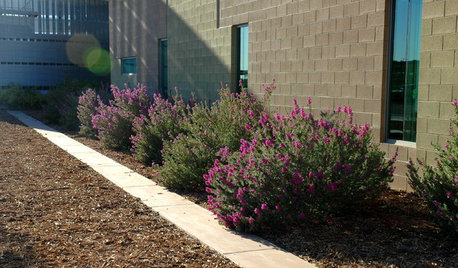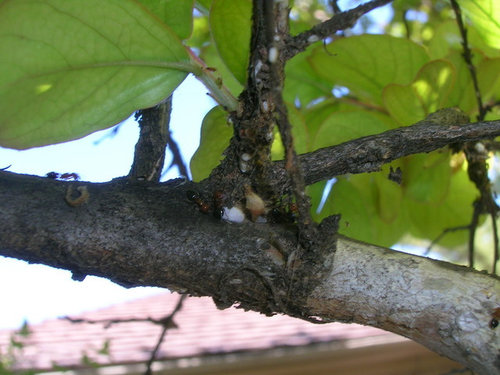Anyone dealing with new crepe myrtle scale?
bostedo: 8a tx-bp-dfw
10 years ago
Related Stories

EXTERIORSWhere Front Yards Collide: Property Lines in Pictures
Some could be twins; others channel the Odd Couple. You may never look at property boundaries the same way again
Full Story
SAVING WATERHouzz Call: Are You Letting Go of Your Lawn?
Many facing a drought are swapping turf for less thirsty plantings. If you’re one of them, we’d like to hear about it
Full Story
GARDENING AND LANDSCAPINGGrow a Lush Privacy Screen
No need to wait forever for patio privacy the green way. These 10 ideas will get your screening up and running in no time
Full Story
FUN HOUZZIn Praise of Silliness
These 16 distinctive spaces are seriously fun. See if any encourage your inner child to break free
Full Story
SUMMER GARDENINGHouzz Call: Please Show Us Your Summer Garden!
Share pictures of your home and yard this summer — we’d love to feature them in an upcoming story
Full Story
LANDSCAPE DESIGNLandscaping Magic Fixes a Dangerous Sloped Yard
It had scary parking, a confusing entry and erosion issues. See how this steep California landscape gained safety, beauty and clarity
Full Story
LIFE6 Tips for Teaching Your Kids to Be Good Neighbors
Everyone wins when your children learn to respect boundaries, get help when they need it and show others they care
Full Story
KITCHEN DESIGNKitchen Recipes: Secret Ingredients of 5 One-of-a-Kind Cooking Spaces
Learn what went into these cooks’ kitchens — and what comes out of them
Full Story
TILETop Tile Trends From the Coverings 2013 Show — the Wood Look
Get the beauty of wood while waving off potential splinters, rotting and long searches, thanks to eye-fooling ceramic and porcelain tiles
Full Story
GARDENING GUIDESHow to Avoid Overcrowded, Overpruned Shrubs
Go for a more natural look that’s easier and less expensive to maintain by giving your plants the right amount of growing room
Full Story






PKponder TX Z7B
bostedo: 8a tx-bp-dfwOriginal Author
Related Professionals
Saint Louis Park Landscape Architects & Landscape Designers · Summit Landscape Architects & Landscape Designers · Brookside Landscape Contractors · Commack Landscape Contractors · Coram Landscape Contractors · Davis Landscape Contractors · Lakewood Landscape Contractors · Saint John Landscape Contractors · Salmon Creek Landscape Contractors · Wilsonville Landscape Contractors · Antioch Landscape Contractors · North Aurora Landscape Contractors · Enumclaw Window Contractors · Oxnard Window Contractors · Discovery Bay Window ContractorsPKponder TX Z7B
bostedo: 8a tx-bp-dfwOriginal Author
Lynn Marie
PKponder TX Z7B
bostedo: 8a tx-bp-dfwOriginal Author
grinchis40
PKponder TX Z7B
bostedo: 8a tx-bp-dfwOriginal Author
jake01
ruthz
cordovalady
bostedo: 8a tx-bp-dfwOriginal Author